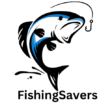Using a 20lb line for carp fishing is generally a wise choice. It offers a balanced blend of strength and abrasion resistance, making it suitable for various fishing environments. The thicker diameter enhances knot reliability and hook sets, essential for controlling carp. However, increased visibility and decreased sensitivity could impede its effectiveness, particularly in clear waters. Monofilament, braided, and fluorocarbon lines have distinct benefits and drawbacks that should align with your specific needs. For instance, monofilament’s buoyancy and visibility might be offset by its ease of knot tying and affordability. If you’re aiming to enhance your carp fishing strategy, further nuances await.
Is 20lb Line Good for Carp Fishing
When evaluating the suitability of a 20lb line for carp fishing, it is essential to take into account factors such as line diameter, casting distance, and environmental conditions. A 20lb line strikes a balance between line durability and weight capacity, making it suitable for general carp fishing.
The typical diameter for a 20lb monofilament line, ranging from 0.35mm to 0.40mm, provides adequate casting distance without compromising strength. Hook strength is vital, and a 20lb line supports robust hooks, ensuring effective hook sets. Line visibility is another consideration; while monofilament lines are more visible underwater, this can be mitigated by choosing appropriate colors or coatings.
Knot reliability is paramount, as manufacturers’ strength ratings can be overstated. Real-world testing shows a 20lb line often achieves excellent performance in securing knots, essential for fish control. Line stretch and sensitivity are also significant; monofilament provides some stretch, aiding in absorbing sudden forces during a fight. However, this stretch can reduce sensitivity, making bite detection slightly less precise.
What Are the Advantages and Disadvantages of Using 20lb Line for Carp Fishing
Evaluating the advantages and disadvantages of using a 20lb line for carp fishing reveals important insights related to strength, durability, versatility, abrasion resistance, visibility, casting distance, line capacity, and handling. A key advantage is the strength balance it offers, providing sufficient breaking strain to manage powerful carp runs, alongside notable abrasion resistance for underwater hazards like branches and rocks. This line’s thicker diameter also enhances knot strength, essential for maintaining line integrity during intense fights.
Versatility options are another benefit, as a 20lb line can be effectively used across various fishing environments and with different rigs and baits. However, durability concerns arise due to the line’s increased visibility, potentially spooking wary carp in clear waters. This Visibility issue can be mitigated by using a fluorocarbon leader.
Casting distance is compromised because the thicker diameter reduces how far one can cast, necessitating a balance between strength and reach. Line capacity is also a challenge; heavier lines occupy more reel space, limiting overall capacity and requiring larger reels for extended runs.
Handling challenges and flexibility trade-offs include the line’s stiffness, complicating knotting and sensitivity, impacting bite detection.
What Is the Recommended Line Strength for Carp Fishing
Understanding the recommended line strength for carp fishing demands a nuanced exploration of varying conditions and target carp sizes to guarantee peak performance and fish retention. The commonly advocated choice is a 15-20lb monofilament line, which offers a harmonious blend of line durability, abrasion resistance, and casting distance. This strength range is apt for handling average carp sizes while maintaining a sensitivity balance vital for detecting subtle bites.
In scenarios with substantial underwater obstacles, such as snaggy or weedy environments, a more robust line, ranging from 25-30lb, is advisable. This enhanced strength mitigates the risk of line breakage, ensuring effective fish retrieval.
Conversely, for long-range casting, a thinner diameter line, typically within the 15-20lb range, is often preferred, balancing strength with top casting distance. Line visibility also plays a critical role, particularly in clear waters where less visible lines like fluorocarbon are advantageous.
Additionally, the choice between monofilament, braided, or fluorocarbon lines hinges on specific fishing conditions and personal preferences. For instance, monofilament’s inherent line stretch provides forgiveness during battles, while braided line’s minimal stretch offers superior sensitivity and strength for heavy cover fishing. Ultimately, understanding the interplay between line strength and fishing conditions ensures a strategic approach to carp fishing.
What Are the Best Types of Line for Carp Fishing
Selecting the best fishing line for carp fishing involves a thorough understanding of the unique advantages and limitations of monofilament, fluorocarbon, and braided lines, tailored to specific fishing conditions and techniques.
Monofilament is favored for its affordability, high stretch acting as a shock absorber, and ease of knot tying. However, its high line visibility and buoyancy can be detrimental in clear waters, and its significant line memory may lead to coiling and tangling issues.
Fluorocarbon stands out due to its nearly invisible water refractive index, making it ideal for clear water conditions. Its high line density ensures rapid sinking, and its enhanced line sensitivity provides excellent feedback on underwater structures. Nevertheless, the stiffness of fluorocarbon complicates knot tying, and its high memory can pose line management challenges. Additionally, the cost is a consideration for many anglers.
Braided lines offer superior strength and line durability, with exceptional UV resistance and minimal stretch, enhancing line sensitivity and casting distance. However, their high line visibility in the water can spook carp, and they may suffer from lower abrasion resistance around sharp objects. Handling braided lines can also be more challenging due to their texture and lack of stretch.
Welcome to fishingsavers.com, the ultimate destination for all things fish-related! I’m Hudson Barney, your go-to fishing enthusiast and blog curator. With a passion for the underwater world and a knack for reeling in the best stories, I dive deep into the realm of fish species, angling tips, and everything in between. Whether you’re a seasoned angler or a curious beginner, join me on this aquatic adventure as we explore the wonders of the fishing universe together. Let’s cast our lines, reel in some knowledge, and make a splash in the vast sea of fish tales at fishingsavers.com!
